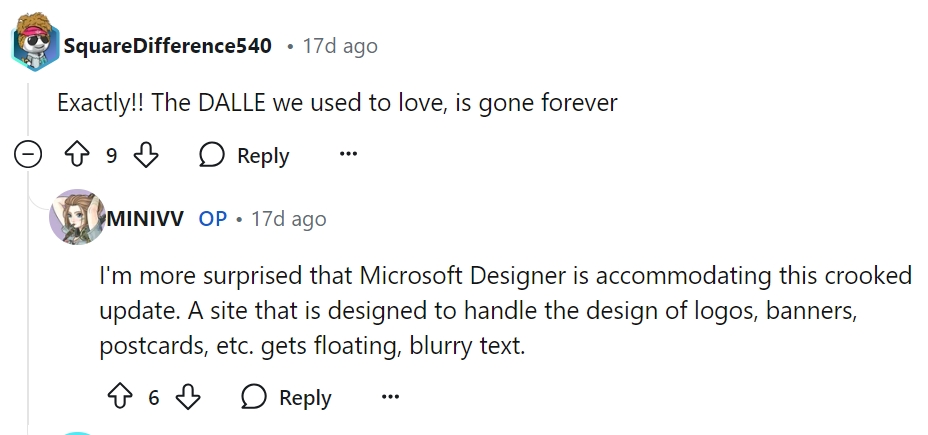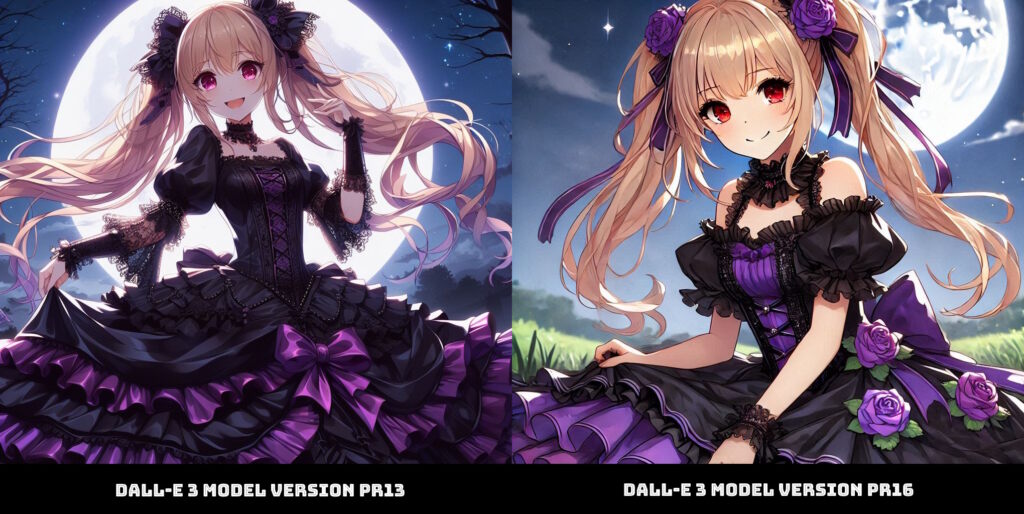Microsoft has rolled back its latest update to Bing Image Creator, reverting to an earlier DALL-E model version after widespread user complaints about reduced image quality.
The December 2024 update introduced PR16, a new iteration of OpenAI’s DALL-E 3, with promises of faster rendering and improved visual fidelity. However, user feedback revealed significant flaws in the model’s outputs, prompting Microsoft to restore the previous PR13 model while investigating the issues.
At its core, DALL-E 3 is an advanced image-generation model capable of creating visuals from detailed text descriptions. Microsoft’s integration of DALL-E 3 into Bing Image Creator enables users to generate custom visuals directly within the Bing search interface. The system also includes features like “boosts,” which prioritize specific user requests for faster processing.
Related: Elon Musk’s xAI Shows Off Powerful Aurora AI Image Generator
PR16: A Promising Update That Missed the Mark
When Microsoft integrated PR16 into Bing Image Creator, it emphasized speed and visual enhancements. Jordi Ribas, Microsoft’s Corporate Vice President of Search and AI, explained, “internal benchmarking found PR16’s quality to be a bit better on average” than PR13. The update was part of Microsoft’s efforts to improve its AI ecosystem by integrating advanced capabilities from OpenAI’s DALL-E 3.
Despite these claims, user experiences diverged significantly from Microsoft’s assurances. Across platforms like Reddit and X (formerly Twitter), users described PR16-generated images as “lifeless,” “cartoonish,” and lacking detail.
I don’t know who you think you’re kidding with this. DALL-E is objectively worse than it ever was after this “update” and you’re being outpaced by other companies like Google. It’s absolutely night and day comparing image quality now to just a couple months ago pic.twitter.com/EdSdk7aign
— outward (@roccynoxy) December 19, 2024
Specific complaints included over-lit images, misplaced textures, and unnatural color tones, such as pervasive green hues. One Reddit user described their disappointment by stating that the model no longer matched the experience they previously enjoyed with DALL-E.


Issues with intricate visual elements, such as lace patterns and layered clothing, were particularly pronounced. A user who attempted to generate an anime-style character highlighted that PR16 rendered images in much lower quality using the exact same prompt.


Broader Rendering Challenges with DALL-E 3
While Microsoft faced significant criticism for its PR16 rollout, the issues were not isolated to Bing Image Creator. Since November 2024, users of OpenAI’s ChatGPT integration with DALL-E 3 have reported similar rendering failures, including color distortions, texture misplacements, and lighting anomalies.
Observations from the OpenAI community forum reveal that these problems are not rooted in the DALL-E 3 model itself but in the intermediate systems responsible for translating user prompts into rendering instructions.
Related: Google’s Imagen 3 AI Image Generator Now Accessible in the US
According to a detailed analysis on the forum, the issues likely stem from failures in prompt parsing and command pipelines. The prompt translation system in DALL-E PR16 appears to introduce ambiguities that lead to inconsistent outputs.
For example, prompts involving complex clothing styles, such as Rococo dresses or Gothic Lolita designs, often result in misplaced patterns, incorrect textures, and stylistic deviations.
Interestingly, these issues are not universal. Platforms like Coze.com, which use an alternative integration pipeline for DALL-E 3, have largely avoided the rendering flaws observed in Bing Image Creator and ChatGPT. This discrepancy suggests that problems lie in the specific intermediate systems used by OpenAI and Microsoft, rather than the core AI model.
Related: Freepik Mystic Takes on Midjourney, Dall-E in AI Image Generation
Microsoft’s Response and the Rollback
Acknowledging user feedback, Microsoft initiated a rollback to PR13. Ribas announced the decision on X, stating: “Thanks again for the feedback and patience. We’ve been able to [reproduce] some of the issues reported and plan to revert to PR13 until we can fix them. The deployment process is very slow, unfortunately. It started over a week ago and will take 2-3 more weeks to get to 100%.”
The rollback is already partially complete, with Pro users and about 25% of boosted requests now using PR13. The gradual reversion reflects the complexities of updating large-scale AI systems, especially when addressing deeply integrated pipelines like those in Bing Image Creator.
Broader Implications for AI Deployment
Microsoft’s struggles with PR16 echo similar challenges faced by other tech giants in deploying advanced AI models. For instance, earlier in 2024, Google had to suspend its Gemini chatbot’s image-generation features after the tool produced racially offensive and historically inaccurate outputs.
These incidents highlight the inherent difficulties of aligning AI advancements with user expectations, especially for creative applications like image generation.
AI systems like DALL-E 3 rely on multiple layers of processing to interpret and execute user prompts. While the core model’s capabilities remain robust, flaws in intermediate systems can significantly undermine performance. The case illustrates that even minor misalignments in prompt parsing or rendering pipelines can result in substantial user dissatisfaction.
However, the rollout of PR16 revealed systemic challenges in maintaining consistency Issues like texture misplacement, color fidelity problems, and lighting artifacts highlight the delicate balance between enhancing speed and ensuring accuracy in rendering. These challenges are exacerbated by the growing complexity of user prompts, which often combine intricate stylistic and material descriptions.
While benchmarking provides valuable insights into technical performance, real-world applications often reveal issues that internal testing cannot predict.
Moreover, the discrepancies between platforms like Coze.com and Bing Image Creator suggest that refining intermediate systems is critical for improving overall performance.
Addressing these challenges requires more collaborative efforts between developers, platform integrators, and end-users to ensure that AI systems meet both technical and aesthetic expectations.

